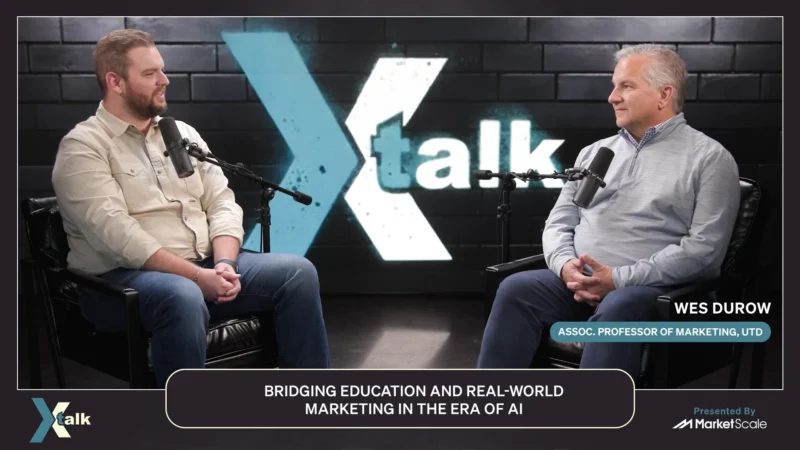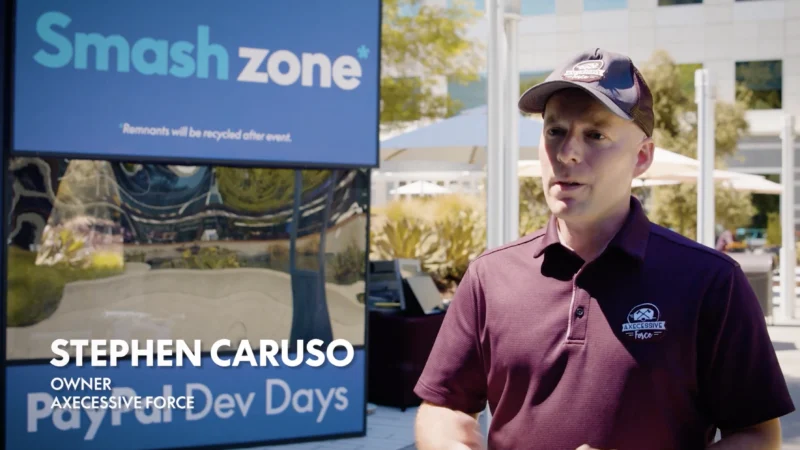Real-Time Data: Preventing the Blind Spots That Break Public Safety
Public safety shouldn’t be a waiting game.
In this episode of Innovation Obsessed, Shawn Yujuico Fontenot, Head of Global Marketing, joins Andre McGregor—former Special Forces FBI agent, who served as a cyber-trained agent, part of the first National Security Cyber Squad and founder of ForceMetrics—explore what proactive policing looks like in practice, and what it costs when first responders don’t have access to mission-critical data.
From law enforcement technology gaps to real-world stories of missed intervention, McGregor draws on years of field experience, community engagement, and tactical innovation to make one thing clear: the data already exists. What matters is how quickly we surface it. Andre emphasizes the urgent need for innovative, rapid-response data solutions in law enforcement:
“If I don’t get that data until two days later, it’s not useful. That means something’s already happened.”
Outdated Tech, Undermined Response
McGregor recalls that when he joined the FBI, agents were still using mainframe systems that weren’t phased out until 2013. Even then, the $200 million upgrade failed.
“Police departments deserve DARPA (Federal Defense Advanced Research Projects Agency) innovation and Apple simplicity, but we give them the budget of an iPhone.”
The average department allocates less than 1% of its budget to new technology. Without meaningful investment in tools to capture data, responders are left to make life-or-death decisions with outdated information.
Investing in real-time data aggregation platforms does more than improve immediate situational awareness—it surfaces deficiencies in training, protocols, and resource deployment. With these insights departments respond more effectively in the moment and can adapt over time. What may begin as a technology upgrade often becomes a roadmap for long-term operational improvement and a clearer understanding of community safety needs.
The Impossible Ask
Today, the expectation is that officers and first responders must be right all the time—even with partial, late, or missing information. Andre’s frontline experience—responding as an FBI agent, listening in on 911 calls at dispatch centers, riding along on domestic violence calls, and seeing how often critical context is buried in unread reports—showed him just how urgent it is to surface the full human story behind each interaction.
“So, think about this. If I’m an officer and I’m interacting with you, the first thing I’m thinking is: are you going to kill me? The second: are you going to kill someone else? The third: are you going to kill yourself?”
And that doesn’t account for the broader context—responding appropriately to a missing child report, recognizing patterns in where someone with dementia tends to wander, understanding PTSD to avoid triggers, or being aware of a history of domestic abuse or housing insecurity.
McGregor frames it simply:
“Law enforcement needs a social truth, not just a criminal record. And they need it in seconds.”
Prevention is Possible—If We Listen Early Enough
McGregor shared real-world examples where behavioral data showed signs long before tragedy struck.
- Domestic violence rarely escalates overnight. Frequent 911 hang-up calls, unexplained injuries or hospital visits, and restraining order violations—each is a warning sign and an opportunity to intervene before the situation worsens. Andre illustrates how even a minor incident can reveal much deeper issues:
“I may be here because of shoplifting, but it’s also that there’s a mental health need or even worse, you’re a domestic violence victim and your partner took your money and you need formula.”
Juvenile offenders often have a trail of trauma behind them. Calmness with a firearm can indicate repeated exposure to violence.
- “Most crimes don’t usually go from zero to shooting people. There are many, many little steps to get there.”
And yet, police respond to more than 20,000 domestic violence calls daily. Over 60% of youth in the U.S. have been exposed to violence. These are not isolated events—they’re patterns.
“You’re looking for the indicators of behavior that allow for intervention before blood is shed.”
Smarter Tools for Safer Interventions
An estimated 1 in 10 police calls involve someone with a serious mental illness (Source). Yet only a fraction of departments have the tools, training, or data access needed to respond appropriately. Only 15% of law enforcement agencies require mental health crisis training (Source). But not every call fits that mold—officers encounter a broad range of individuals with neurological conditions, dementia, or other complex cognitive needs that require a different approach.
Nearly half of children with autism will attempt to wander at least once—and many are unable to communicate their name or phone number (Source). If an officer knows a child with autism has a history of wandering and is often drawn toward water, they can begin searching near ponds, rivers, or pools—before a call turns into a recovery mission.
When the right information arrives early, tragedy doesn’t have to. AI-powered technology can help fill these critical gaps by handling data collection and surfacing what matters—so first responders can focus on safety, not system searches.
A Data-Driven Future for Public Safety
Every missed moment comes at a cost—not just in lives, but in trust, community stability, and the basic right to feel safe. Yet most public safety systems are still built to react, not prevent. Andre McGregor challenges us to redefine success in public safety—not by what we respond to, but by what we prevent:
“Let’s measure success in new ways. Let’s create value around what didn’t happen.”
Success shouldn’t only be counted in arrests made or reports filed—it should be measured in lives uninterrupted, crises averted, and communities that never had to feel the impact of violence or tragedy. With the right tools, the data already being collected—911 calls, police reports, behavioral patterns—can help identify risks before they escalate. Innovation doesn’t replace human judgment; it strengthens it, giving responders clearer insight and faster context when every second matters.
Because safety isn’t just a goal. It’s a right—and innovation is how we protect it before harm ever occurs.




